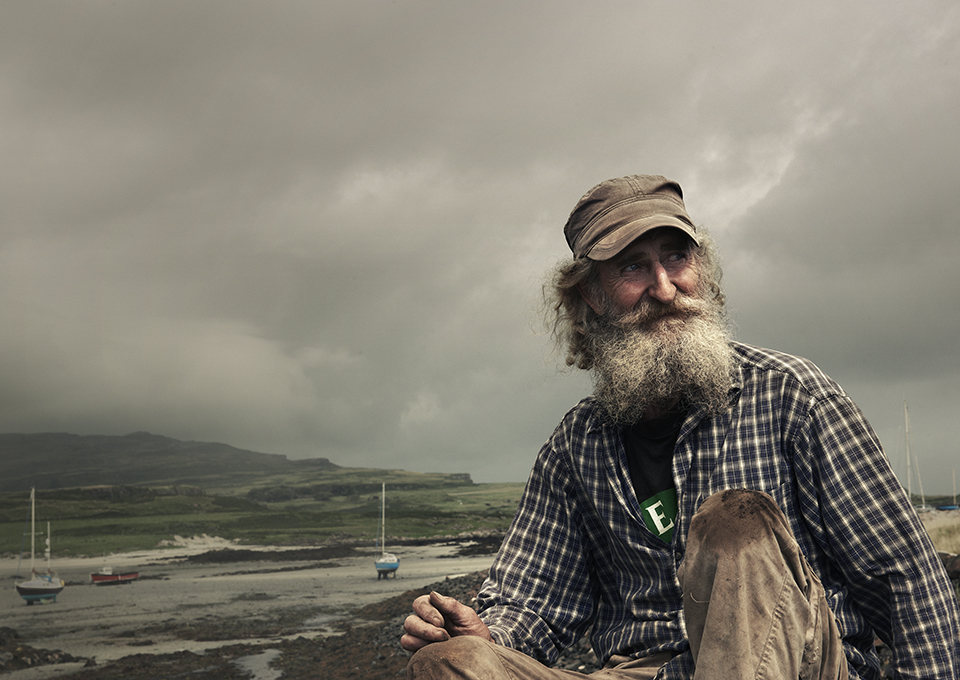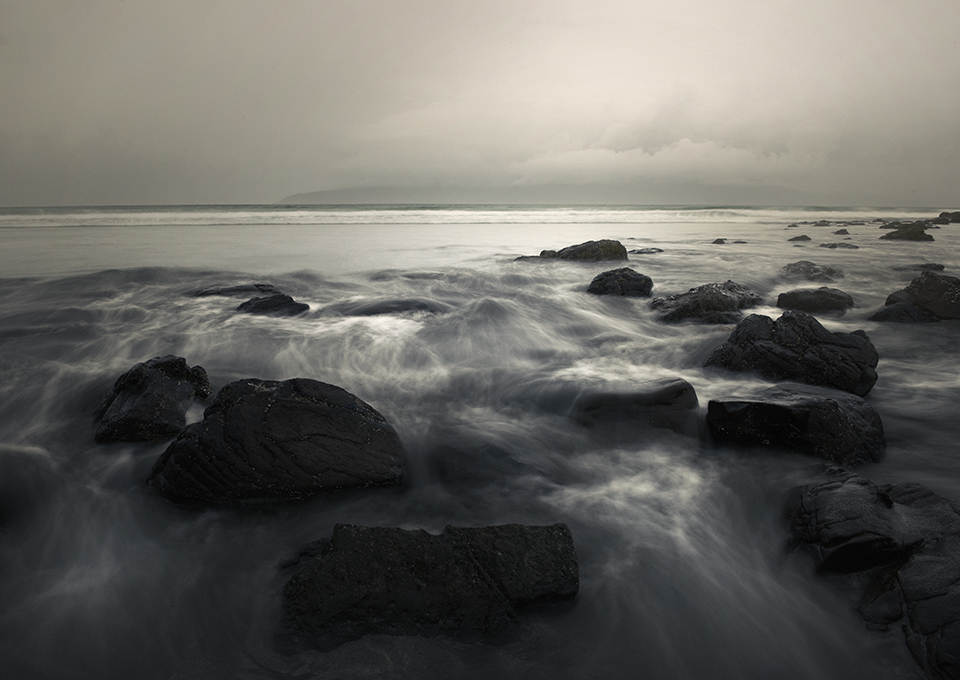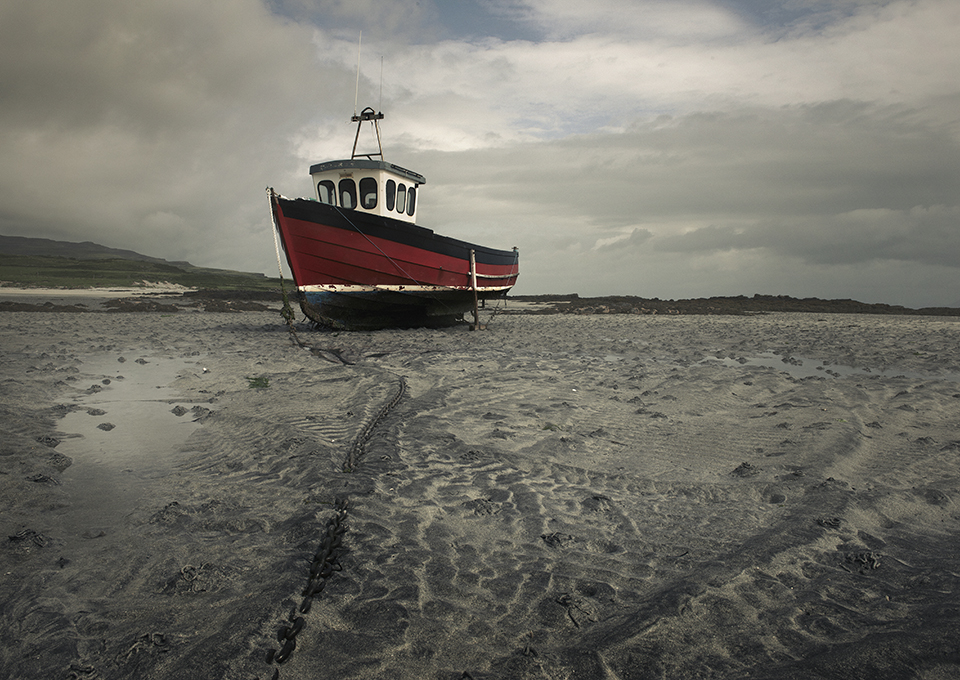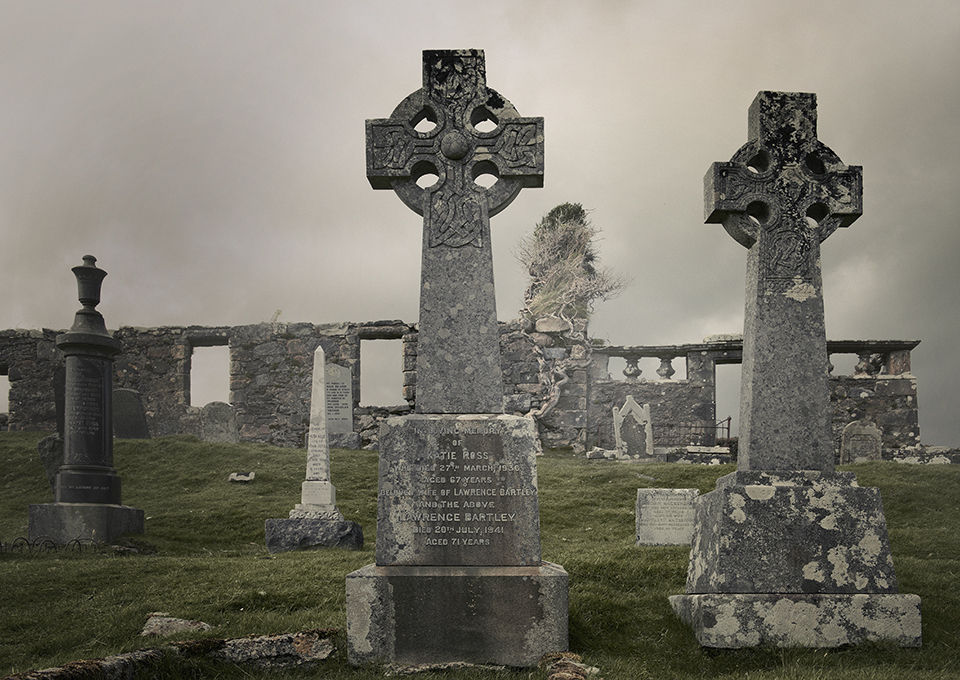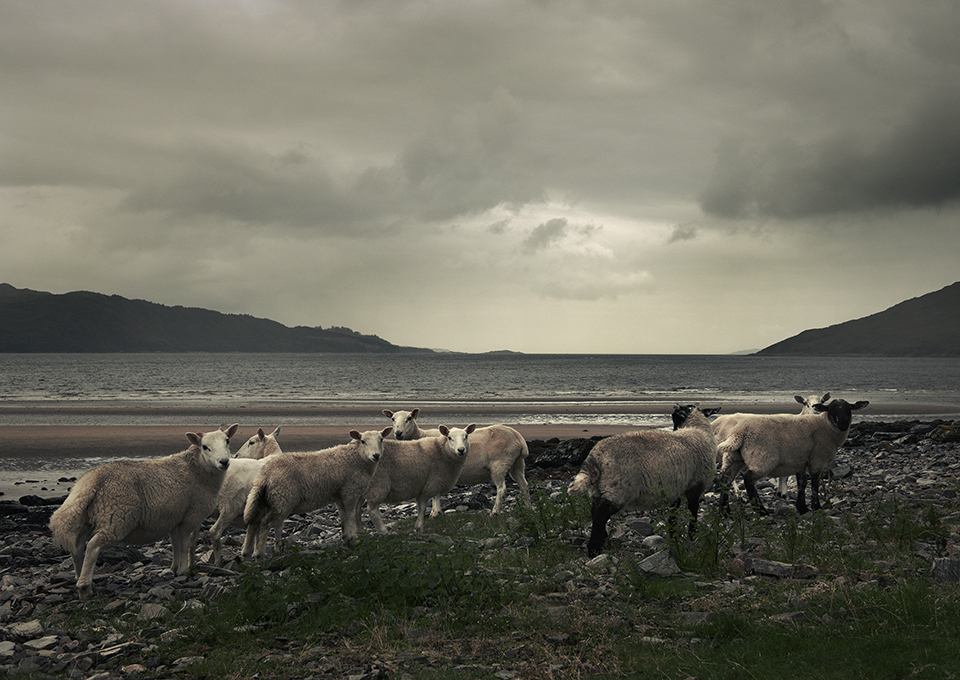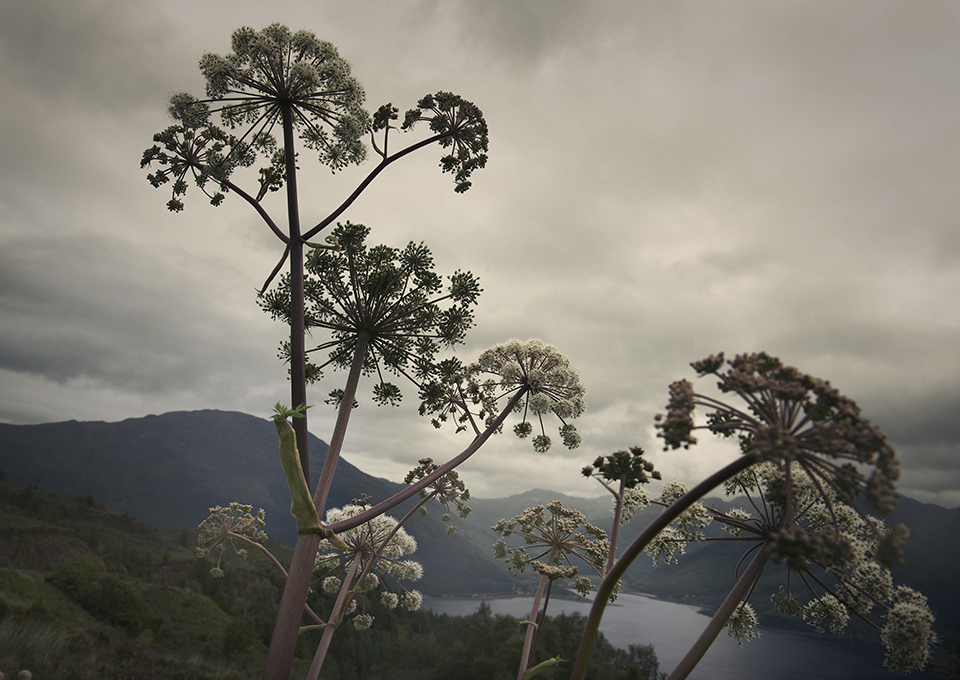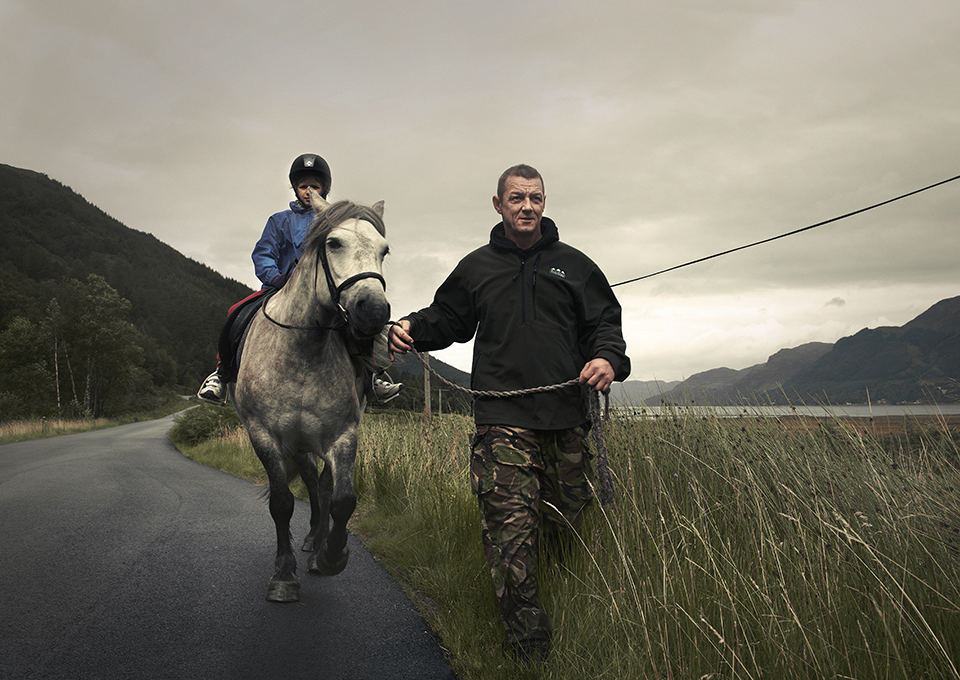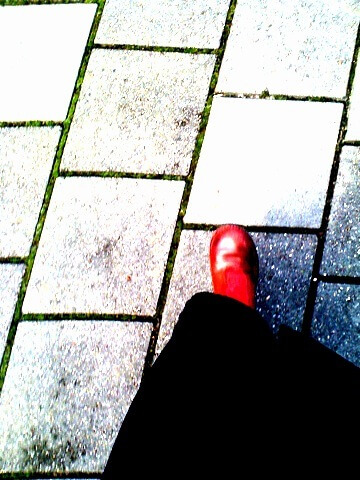They hate accordions, have a history of bloodshed, invent monsters at the drop of a hat and then try to tell you they have a sensitive soul. Welcome to the Scottish Highlands.
Outside, the birds have put their heads under their wings. And, as befits a Scottish nature man, he solemnly believes in ghosts and elves. A trout is simmering in the pan.
Scottish Highlands
“Do you know the story of Rip van Winkle? “Who?” we ask in chorus. “Rip van Winkle! He’s from your country, for goodness’ sake! Anyway, Rip was hated by his wife. To get away from her, he walked up into the hills one day. He met a man who claimed to be a ghost and they drank a few pints together.
Rip fell asleep and woke up twenty years later. He went back to his village and discovered that his wife had died in the meantime. Something similar happened to me, too.” “Your wife died?” I ask, puzzled.
Women never listen
We have only known the boat-builder cum poet and fiddler for half an hour and as far as we know, he and his wife are indeed divorced, but she is still in perfect health. Charlie shakes his head furiously. “You women never listen”.
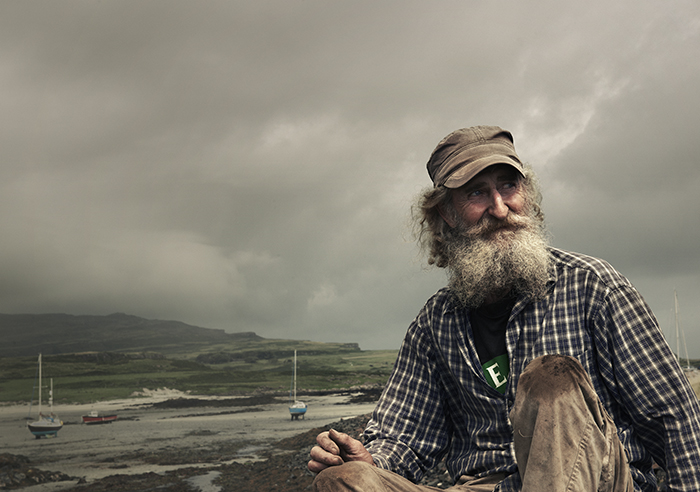
This anecdote is an answer to my question about what makes the Scot a Scot. Since the photographer and I arrived in the Highlands, the topic of conversation has been the Scottish national character. According to our host, this character is unique.
Scottish fiddlers
“Sensitive and proud, Scots believe in elves and importantly”, he proudly raises a finger here, “we have our own music. Not those silly British waltzes. Or folk music ruined by an accordion. Do you know how we Scottish fiddlers imagine hell? As a place full of accordions.” He shakes his head in disbelief. “Accordions!”
The Highlands. Less than three hours earlier, we drove north-west from Glasgow. We buy Guinness in an unmanned supermarket for Charlie, with whom we’ll be staying the night. We struggle clumsily with the unfamiliar scan-and-pay machine. As soon as we leave the city, the landscape is also unmanned. Dumbarton, Balloch I read on the signs. Place names that remind you of Harry Potter, like the surroundings.
Loch Lomond
Just past Balloch, we stumble on our first loch, Loch Lomond, the largest lake in Scotland. Ever since the Inverness Courier published the story of a monster in Loch Ness in 1933, lochs have captured the imagination.
Although the grandson of filmmaker Wheterall confessed in 1994 that his grandpa had played a trick back then by staging first footprints and later a photo of Nessie, that’s dismissed as a lie in Scotland.
West Highland Way
“Nonsense”, says the man at the petrol pump when I ask. “Hands off our monsters. It’s core business in Scotland”, someone else warns. We peer intensely at the loch but don’t see any monsters. There are small islands anchored in the lake.
The last ray of daylight worms its way between the rain clouds. Mountains become dark grey silhouettes in the falling darkness. We leave the loch and come into a spectacular area round Crianlarich on the West Highland Way.
Fifty shades of grey
Rugged mountains rise up from a mustard-coloured moor. Here and there a fast-running steam interrupts the yellow. The wind races over the grass that bows deep. And then suddenly the world is granite. Naked granite mountains in fifty shades of grey. Little stone rivulets trickle downwards like tears.
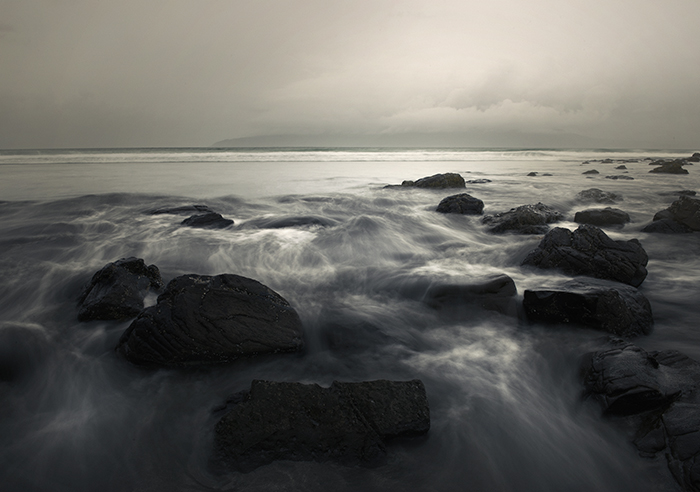
There’s a small white cottage up against the granite. What’s it doing there? Who lives in it? There’s a bumpy track leading up to it. In the last hour we haven’t seen a living soul. Would someone open the door if we knocked? Would the photographer and I be welcomed in the way that was traditional in the time of the clans? When etiquette demanded that guests were well received?
Land of clans
The Highlands are the land of the clans: powerful families that had owned the land since the early Middle Ages and divided it up among themselves. The MacDonalds, the MacGregors, the McLeods. They could be recognized by their own tartan.
Charlie is a modern exponent of Scottish hospitality, it occurs to us while we drive on. He welcomes people onto his boat from all over the world, people who are couchsurfing.
Glen Coe
A river wanders with us while we take the bends in a landscape that is getting darker. It feels dark as well. This is the land of Macbeth, the general who drenched his ambition in blood. Violence runs as a theme through Scottish history. Here, for instance, in the valley of Glen Coe we are driving into.
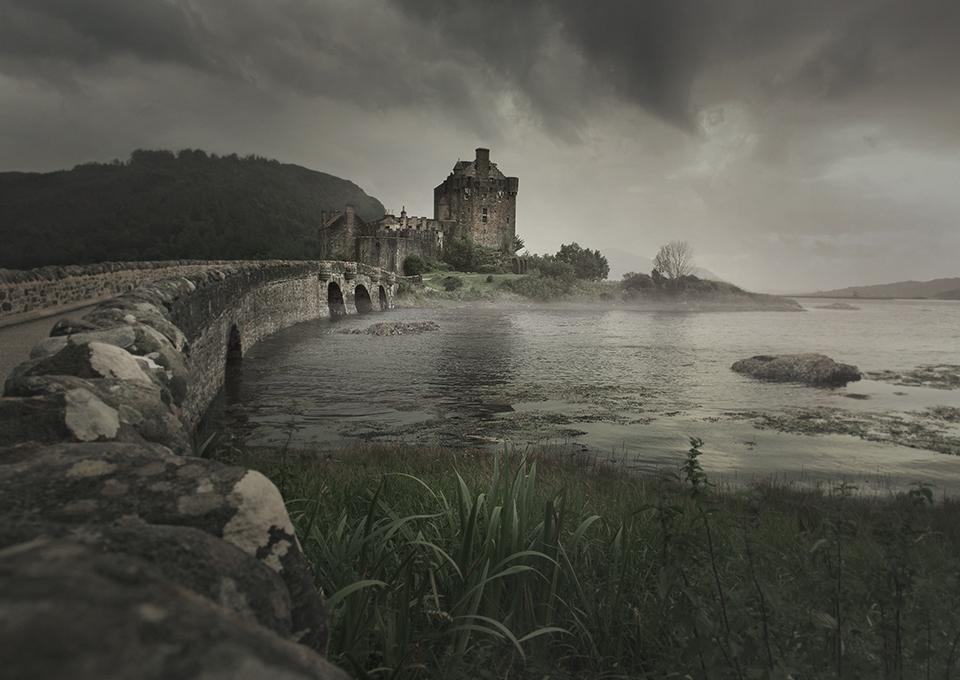
Bare brown mountains and low-lying clouds. The fear of the MacDonalds clan that was slaughtered here is almost tangible. It’s as if we can see the women who just ahead of us fled into the mountains, dragging their children behind them in their haste to reach safety.
Fort William
They must have been scarcely able to grasp what happened to them on that early morning in 1692 when 120 soldiers raised their swords and murdered them one by one. The same soldiers they had hospitably provided with lodgings for the previous 12 days. The clan elder had been too late in pledging allegiance to the king and that was how King William punished disobedience.
We turn off in the direction of Fort William and once again the landscape changes. More water, Loch Linnhe. The granite mountains suddenly shrink to become green hills. This is the home country of Ben Nevis, the highest mountain on the island of Great Britain, which drapes itself round the south flank of the town.
Gairlochy
On to Gairlochy where Charlie’s junk is berthed. “I trek a lot through the Highlands”, Charlie tells us that evening when the trout is on our plates. “Sometimes I walk through the wilderness for weeks. One evening I was walking on a plateau high in the mountains and I felt the presence of something behind me. It was pitch black and you know you’re vulnerable.

One false move and you can fall and break a leg. Which means the end of you in these parts. I decided to take a seat on a stone and introduce myself at length to whatever it was. So there I was in the middle of the night on a plateau telling stories about my parents, my family.
Guinness
When I was finished I felt an immense sense of calm. Once I was back in the tent I fell into a deep sleep. I didn’t wake up for a whole day. Just like Rip van Winkle.” That night we also slept as soundly as Rip van Winkle, although we suspect the Guinness played a more than marginal role.
The following morning, while the mist was floating past our porthole, we left Gairlochy and headed for the Isle of Skye.Skye means cloudy island in the Norse spoken by the Vikings and that’s appropriate for this morning.
It is so misty above Loch Duich that it’s difficult to see where the granite mountains stop and the clouds full of rain begin. The water is dark blue, trimmed with yellow seaweed piping. A girl on a horse steps past us. Then the road begins to twist and turn as if it wants to shake off the car.
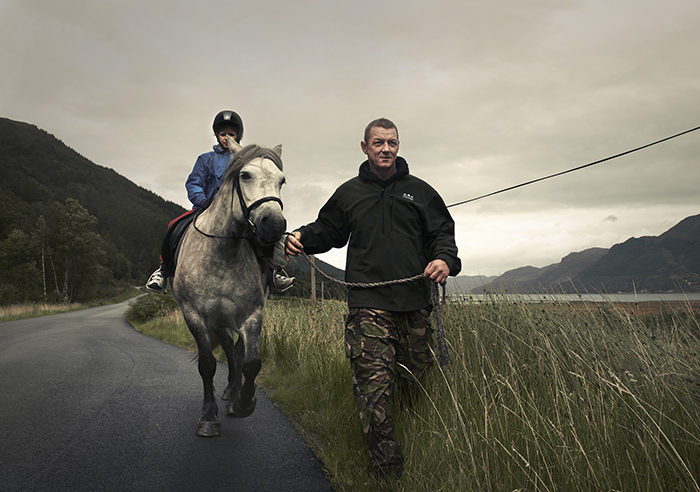
We climb towards the high pass of Bealach Ratagain. From above you can see the tops of the Five Sisters of Kintail. According to the legend, five sisters had themselves turned into stone to preserve their beauty until their fiancés turned up. Below, the roofs are the colour of grey mist.
Kylerhea River
“Arrrre you blind woman! You arrrre on the middle of the rrrrroad.” We are frightened by a Scot who shouts out of his car window. He gesticulates furiously that he wants to pass our parked car.
There’s enough room up here on the pass, but the Scot apparently thinks we shouldn’t be allowed to stop. He points to a trench beside the road. “Therrrre is a dangerrrrous ditch woman.” We ignore the Scot. Shortly afterwards, we wind carefully downhill towards the Kylerhea River. There are sheep foraging about on the little beaches along the river. A lamb runs ahead of the car.
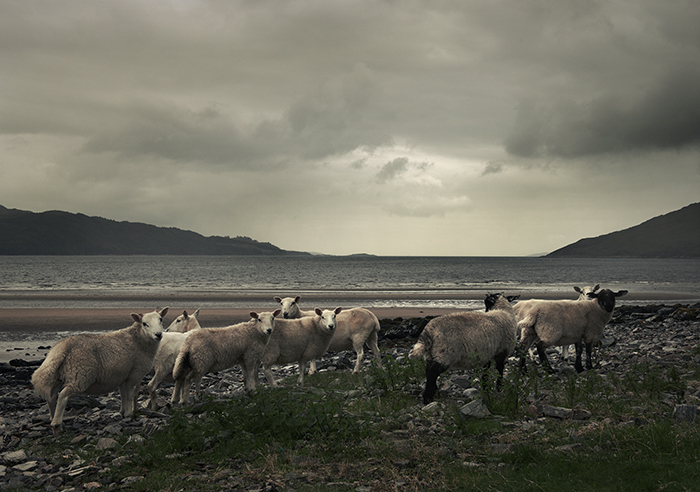
At the ferry we drink coffee in a lighthouse. Scotland is an unmanned country with faith in humanity, I think to myself as we pour coffee out of a thermos can and throw the money into a basket. Then suddenly the angry man is standing next to us. “You made me go thrrrrough the ditch,” he says accusingly and shoots off a few more rolling ‘r’s at us in revenge.
Cuillin Hills
On the other side in Kylerhea we find ourselves in a hilly landscape: the Cuillin Hills. Not high, but with razor-sharp creases. The wind is picking up. Here and there small pine trees huddle together for shelter on the bare moor.

In the yard of a second-hand shop, there are all sorts of things rotting away in the rain. Wooden tables are struggling to stay standing, the table tops shrivelled to viscous bulges. A few women are inspecting the china. “No point in tidying everything up every day”, the owner shrugs and dilutes her morning tea with a shot of whisky.
Elgol
We pass by a graveyard, one of many. If you didn’t know better, you would think that Scots drop like flies. Now and again the sea peeks between the mountains. Elgol, a fishing village. A school, a few houses and a beach with plenty of views through to the Cuillin cliffs. The sea thunders over the beach.
Boats sail out from here to spot whales and sharks. A man in waders approaches me. “Jimmy”, he shouts into the wind. Jimmy is the Scottish term of address for a friend. I don’t know if he means me or is introducing himself.
Mallaig
We take turns throwing stones into the ocean. “Scotland is going to the dogs”, he shouts when I ask about the coming referendum on independence. “The fishing doesn’t bring in anything and there’s no work.” He shrugs. “What’s the point of independence? No-one lives here.” He turns round to where there are only some sheep.
We leave the car behind and take the ferry to Mallaig on the mainland. A taxi driver picks us up, a small woman with a beard. She is eating an apple and scarcely reaches above the steering wheel. “Are you French? I don’t like the French, they’re rude.” It sounds like furrrensj arrre rrrude.
Silver Sands
Silver-coloured sands between beautiful bays push themselves into view. The sea is azure blue. This strip of coast between Morar and Arisaig is called Silver Sands. All of a sudden it’s summer. “This is Scotland, too”, says the driver. “If you don’t like the weather, wait five minutes.
But the water never gets warm”, she says while spitting out pieces of apple core in the direction of the bay. “These days, it’s really trendy to get married here on the beach. No idea why”, she says with her hairy chin jutting out. “Usually the wind blows the whole tent away before the ceremony.”
Arisaig
In Arisaig we take the small-islands boat that calls in at an archipelago of little islands. According to writer Paul Theroux, their names sound like a badly spelled menu. We’re going to Eigg. The boat hasn’t even left on its journey over the Atlantic when the captain bellows: “Right!”
There on a rock in the sea there are sea lions watching us. Shortly afterwards, there’s another bellow. This time it’s the black tails of the minke whales that justify the sound. Then the Scur of Eigg comes into view. The wonderful high cliff of layers of stone, the symbol of the island.
In 1997 the island was bought by its own inhabitants. A unique phenomenon within the United Kingdom. These inhabitants are now standing at the harbour waiting for the boat because the ferry not only brings tourists but also the daily post and supplies.

Castle Island
We hire bicycles to explore the 10-kilometre-long island and labour upwards along the coast. Past the naked carcasses of boats at ebb tide. There is something obscene about all these boats with their leeboards stuck in the sand.
At every bend we are rewarded with a new view: Castle Island where the only inhabitants are sheep, fields full of purple heather, white cottages against grey mountains.
Massacre Cave
And here, too, on the island there’s no escape from the violent clan history. On Eigg it was the MacLeods who smoked out almost four hundred MacDonalds who were hiding in a sea cave. The Macleods had given up the search and were leaving when they suddenly saw a MacDonald scout who thought the coast was clear. Massacre Cave has since become a tourist attraction.
The ghosts of the MacDonalds are said to roam the island still, but violence is a thing of the distant past. According to Maggie, the chairman of the residents’ council, living on a Scottish island requires other qualities these days. “You have to be a bit daft to live here.”
Scottish folkbands
Back in the harbour we see a seal swimming past on its back. He calmly takes a bite out of a fish. On the noticeboard, a note announces the performance of a Scottish folk band. Do they play accordion as well?” I ask an islander. “Accordion? We’re Scots, you know. A Scot doesn’t play the accordion.”
Text: Anneke de Bundel – Images: Nicole Franken
Translation: Christine Gardner
This story was published in Villa d’Arte – 2014.
This story has also been published in Dutch in our book On fairies and bullet holes. You can order our book here.
More Highlands? Read:
Highlands Practical:
- We slept at Scottish homes through Couchsurfing.org


